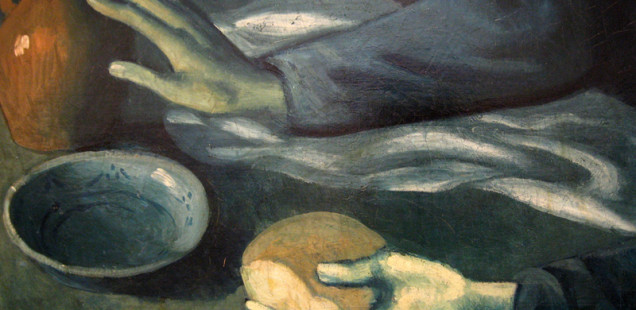
Inhabiting our Space: Liturgy Changes, Part 1
It’s an exciting week for All Saints! On Sunday we celebrated our final worship services at St. Gabriel’s. And this weekend marks our entrance into our new church facility with a Consecration Service on Friday followed by the first Sunday services in our new home. There’s a line in Marilynne Robinson’s novel Lila that sums up the type of “good” I hope we’ll feel this Friday and Sunday: “It felt very good… Good like rest and quiet, like something you could live without but you needed anyway.” That’s how Robinson describes what it feels like to be in the right place – the place you’re supposed to be, what we call “home.”
Our right place, our home, is new – brand new construction and new to us liturgically. Over the next three days we will publish a three-part series on our blog in which I will introduce three new aspects of our worship:
- An Offertory
- A Gospel Procession
- Kneeling
Think of them like dance steps; we’re adding a few new moves to better inhabit our new worship space. These steps have been “danced” by Christians for centuries. And now we are able to join in and perform the same steps that have constituted liturgical worship in Christian churches for ages.
Below is the first of our new steps. Tomorrow, we’ll take a closer look at the Gospel Procession.
OFFERTORY
We will have an offertory (from the word “offering”). In many ways, that’s ultimately what corporate worship is – a collective offering of our individual selves together in Christ (the offering, i.e. “the Lamb of God who takes away the sins of the world”) to the Father through the power of the Holy Spirit. And we’re accepted, only because Jesus’ was accepted for us at his death, resurrection, and ascension. Now, as those united to Jesus through baptism and faith we “present (our) bodies as a living sacrifice, holy and acceptable to God, which is (our) spiritual worship” (Rom. 12:1).
A primary way Christians do this is through giving financial tithes and offerings at the beginning of the Eucharist. We give a portion of our wealth back to God as a token that we are seeking to give all of our selves Him.
To put it language many of us are familiar with, we’re going to “pass the plate.” This will happen at the outset of the Eucharist because originally Christians brought their own little pieces of bread and small amounts of wine to worship. These “offerings” were collected beforehand in a common plate and cup and then brought forward when it was time for Communion. As the Church grew and worship became not only legal but public this practice became cumbersome to continue in its exact and original form. So, bread and wine began to be provided for worshippers by the church. But worshipers then began to give money or something else of value at the beginning of the Eucharist to connect themselves and their lives to the bread and wine being offered. This is why an offering in some form has always been part of Christian worship. At All Saints we’re simply changing our form of offering to more fully express all of what we’re doing in giving our money. It’s not just paying for the services the church provides which we enjoy. Far from it! It’s collectively providing for our common communion and a sign by each of us that we’re attempting, by God’s grace, to offer and return all of ourselves to God by giving away a portion.
[…] *This is the second of a three-part series on changes to our liturgy. Read yesterday’s post here.* […]